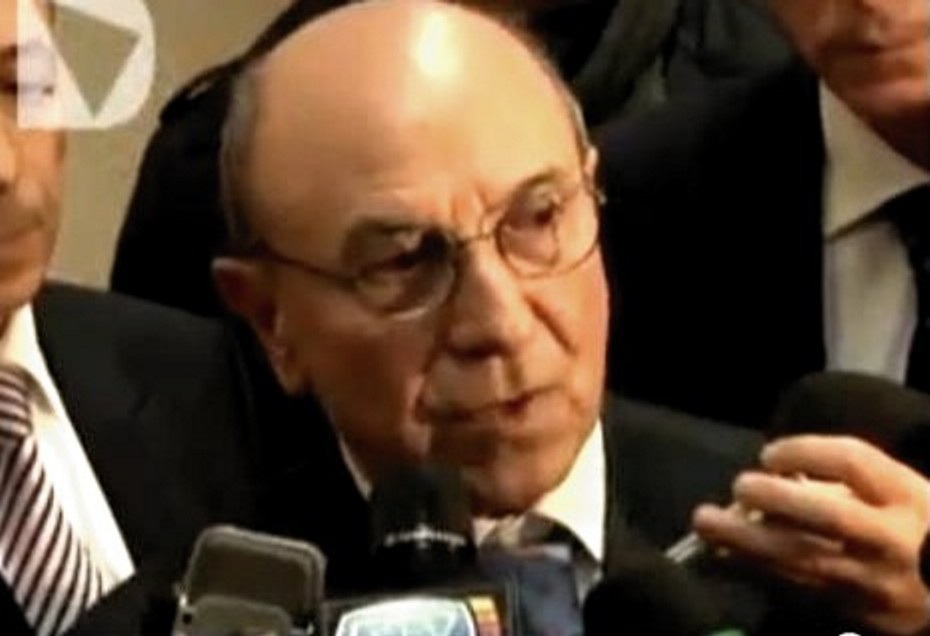
Tuesday, March 26, 2013
More Pervasive Myths We Will Nail In Our Various Hoaxes Series In Due Course
Posted by Our Main Posters

We hope you made it through those amazing Powerpoints on the case for guilt introduced in the post directly below.
We have created around two dozen other Powerpoints also. Here are all Kermit’s Powerpoints and here are all other Powerpoints.
Below are summaries of some more key and very pervasive myths which you can easily spot in today’s media in the US and UK (though never in Italy) which we will nail in depth soon in other longer posts.
The real hard truths can all already be found here on TJMK if you search for them. Please feel free to email us if you need some quick guidance.
1) That Knox and Sollecito maybe face a “retrial”
Rubbish. At most they face a re-run, done properly, of a poorly managed, legally and scientifically incompetent, and highly biased first appeal. It SHOULD look like any US or UK appeal: limited, fast, focusing only on a few points, no consultants, no witnesses, no attempt to run a new first-level trial.
2) That any such “retrial” is a case of double jeopardy
Rubbish. Under Italian law Knox and Sollecito still stand accused of murder and other crimes until the final appeal court (in this case the Supreme Court) signs off, so they were NEVER found “innocent, end of story” at first appeal level. There’s no question of double jeopardy; and the exact-same rules apply in the US.
3) That Amanda Knox was forced into “confessing”
Rubbish. This is the misleading label for her framing of Patrick Lumumba. She spilled the beans fast and vociferously (and repeatedly) after Sollecito who was being interrogated in another room sold her out and said she had made him tell lies. Interrogations were short, she had an interpreter, she was not interrogated as a suspect without a lawyer, and she had refreshments.
4) That all the DNA evidence was thrown out by Hellmann
Rubbish. Hellmann (who is now edged out in disgrace) and Zanetti were not criminal judges, and this was their first DNA case. They were totally at sea. By innuendo, two consultants, illegally appointed and ill qualified, tried to make out there was possible contamination. They proved nothing. They ADMITTED Meredith’s DNA was on the big knife and that Sollecito’s DNA was on the bra clasp. There was lots of other incriminating DNA evidence outside Meredith’s door.
5) That “the” prosecutor was rogue, satanist, and out of control.
Rubbish. The lead prosecutor at trial (Mignini) is straight as an arrow and very admired, and has no interest in satanism. His work was checked by a co-prosecutor, other prosecutors, and many judges. He is in line for a major promotion, and has no dark cloud hanging over his head. The Supreme Court TWICE came down strongly in his favor in the part several weeks, and he is about to be promoted to Deputy Chief Prosecutor for the Province of Umbria.
Final warning:
Disregard everything coming from ABC, CNN, and any Seattle TV station. They are highly biased for commercial reasons, they don’t know the case, and they have essentially been serial-lying to the American public.
Monday, March 25, 2013
Nailing Myths #1: In Fact 2009 Trial Was Decisive By US/UK Standards, Evidence Very Powerful Indeed
Posted by Our Main Posters
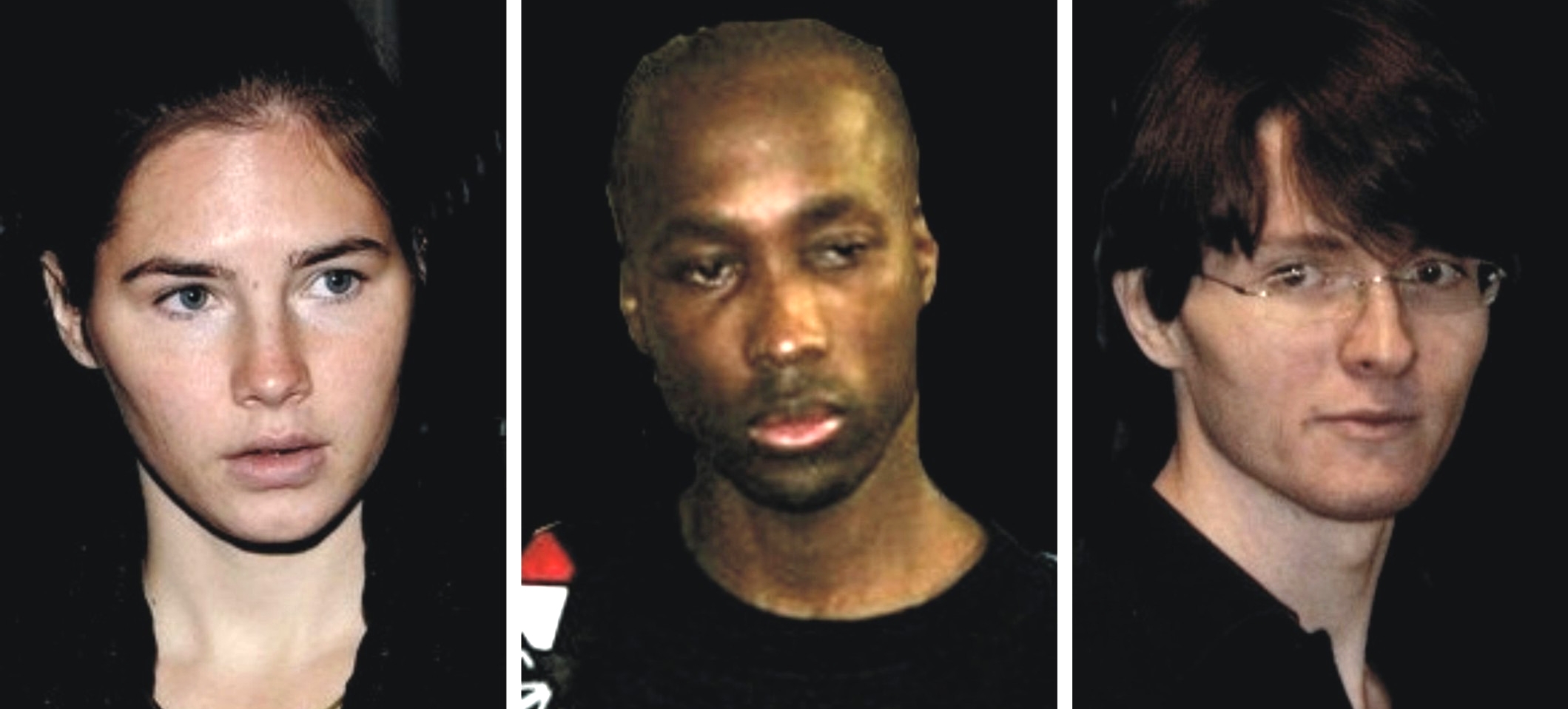
This first post in our new series is a collection of Powerpoint slides summarising the case against.
It was created by our lawyer James Raper with help from Kermit on the content and slides. Please load Powerpoint Viewer if not on your system, and click here for the show.
The Powerpoints consist of 150 slides, the outcome of many hours of work, and should open up in the viewer via most Internet connections in 30 to 60 seconds.
As we continue to point out NOT ONE credible independent lawyer has ever destroyed this case, or come up with a scenario that lets Knox and Sollecito authentically off the hook.
See the header to this post? MANY lawyers are making the comment that in the UK and US this trial would have been the end of the road. No judge in the US or UK would have okayed any appeal. There were never the grounds.
Elite First Criminal Section Of Italian Supreme Court Now Receiving Prosecution Critiques
Posted by Peter Quennell
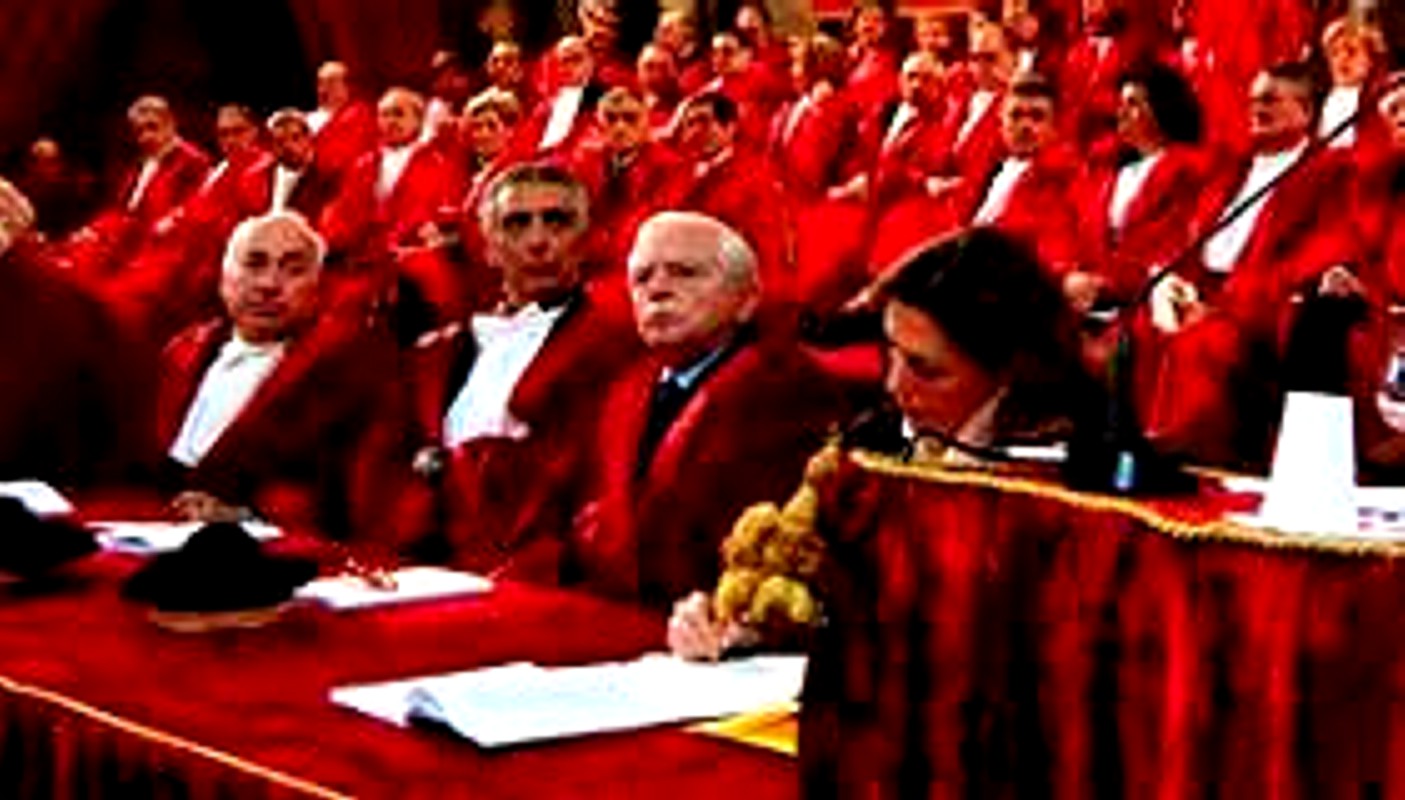
[Above: Some of the judges of the First Criminal Section hearing another recent case, with other sections behind]
We believe the woman in the image is PIERA MARIA SEVERINA CAPRIOGLIO who is the lead judge (rapporteur) for the case.
Dr Caprioglio is known as a legal expert and hardliner on sex crimes. There is a total of five judges, and the president of the First Section is on the panel. This is unprecedented judicial firepower for a murder case, and seems to be a response to the enormous damage done by the Curt Knox/David Marriott campaign. No American political leader is going to second-guess this.
We are anticipating tweets and news reports out of Italy throughout the day. Andrea Vogt is one who is tweeting from the court. Follow her here.
First report:
@andreavogt #amandaknox discussions starting now in cassation court in Rome. Judge Caprioglio is summarizing the case.
Second report
@andreavogt Procuratore Generale Riello now taking the floor in #amandaknox case, after a 90-minute review of all the arguments.
[Deputy Chief Prosecutor Luigi Riello [image below] holds the same rank that Dr Galati held before he transferred to Perugia to be chief prosecutor there.]
Third report
@andreavogt PG Riello: I believe the judges [Hellmann and Zanetti] lost their way. There are elements that were absolutely not taken into consideration.
Fourth report
@andreavogt PG read from Guede’s letter blaming Sollecito and #amandaknox. Says “strange” that court believed some Guede statements and not others.
Fifth report
@andreavogt The president just curtly asked PG Riello to get on with it, not go into details heard already in first instance and appeal.
Sixth report
@andreavogt PG Riello has concluded, asking that acquittals be anulled and an appeal retrial be set. Half hour break in #amandaknox hearing.
Seventh report
Okay this is us. The proposal to annul the Hellmann-Zanetti outcome has gone viral on Italian media websites. A translation of ACP Riello’s remarks is coming.
Eighth report
@andreavogt Cassation back in session in #amandaknox case, w/ Kercher Atty F. Maresca asking why there wasn’t a full review all forensic evidence.
Ninth report
@andreavogt Giulia Bongiorno has begun def arguments in #amandaknox case: “raff sollecito went to jail for a shoeprint that belonged to Rudy Guede.”
Tenth report
@andreavogt #Bongiorno just pointed out a factual error in the PG’s #amandaknox arguments. Judges listening. She’s a very good orator.
Eleventh report
@andreavogt C. Dalla Vedova urges Cassation to uphold #amandaknox acquittals and overturn slander: “This girl was stressed, confused, pressured.”
Twelvth report
@andreavogt Lawyers say the court of cassation is expected to announce a decision in the #amandaknox case around 21:00.
[Image below: Luigi Riello Deputy Chief Prosecutor Of The Supreme Court]
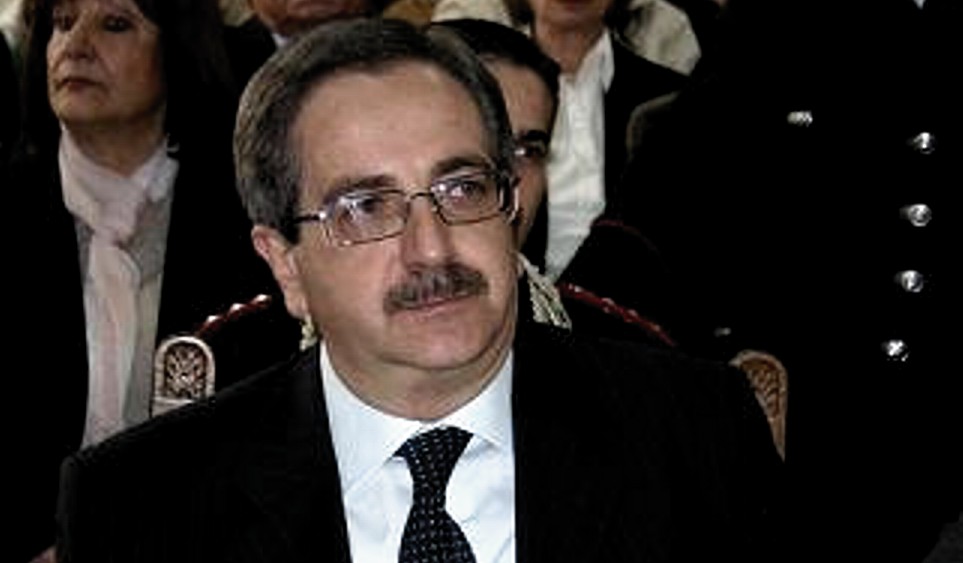
Supreme Court Appeals: A Good Briefing On Tomorow’s Court Proceedings By Italy-Based Andrea Vogt
Posted by Peter Quennell

[Image above: Supreme Court in the foreground and St Peters & Vatican in the background]
Andrea Vogt often tweets very usefully on the case. Her tweet feed is here.
Today’s tweet pointed to this overview here. It is very worth your reading the whole piece.
This is news about three of the judges of Cassation’s elite First Section on Criminal Cases which hasnt yet appeared in the Italian or, UK or US media.
I’ve chosen to not name the magistrates involved in the case until the hearing opens Monday, but for those following closely, here is some brief background on the key judges whose roles are more prominent, based on information I have gleaned from Ministry of Justice documents and “bolletino ufficiale” or public bulletins required to publicly announce personnel changes and events in the judiciary.
The presiding judge is a 72-year old magistrate originally from Naples. Over the years he has dealt with some of Italy’s most high profile crime cases, including the Sarah Scazzi case, as well as the Cassation’s 16-year prison sentence confirmation to Anna Maria Franzoni in the “delitto di Cogne,” the first high-profile case to divide Italy among innocentisti and colpevolisti lines. According to Ministry of Justice documents, the relatrice in the Amanda Knox case is 57-year old female magistrate from Turin.
The procurator general is the figure who has a prosecutor-like function and who presents the case to the panel and suggests what decision should be taken. In this case, the PG is married with two children, has been a judge since 1979 and worked for over two decades in Naples, including several years at the court of appeals there. He is known for his hard line against the clans of the Camorra.
Dr. Giovanni Galati, the Perugia procurator-general leading the recourse of the appeal’s court acquittal ruling is also no stranger to high-profile cases, having worked in the 1980s on the case of Roberto Calvi, the Italian banker murdered and found hanging from Blackfriars Bridge in London in June, 1982
And this further explains the Cassation decision last week which will probably see the hapless Mario Spezi back in prison. We have several more of our own posts pending on this very complex affair.
There was a major development in that case earlier this week, when a separate section of the Cassation court ruled that the decades- old Narducci case, which Mignini had been ridiculed for pursuing, be sensationally re-opened.
The ruling gives new credence to Mignini’s much-maligned theory that there had been a body swap and cover up in the death of the Perugia doctor found in Lake Trasimeno and alleged to be involved in the Monster of Florence case.
Mario Spezi is among those whose acquittals were overturned this week and who has been called by the high court to stand trial. Spezi’s alleged crime is calunnia, for suggesting Antonio Vinci was the real killer (his book marries this theory and it is the charge over which he was originally taken into custody in 2006). It appears there are still a few chapters to be written.
Spezi has one definitive defamation conviction from the 1980s, and in the last two years, courts in Perugia and Florence handed down other convictions. He also faces trials in Padua, Milan and Perugia: all related to allegedly false or defamatory declarations in the Monster of Florence case.
Saturday, March 23, 2013
The Hellmann-Zanetti Appeal Court’s DNA Consultancy Looks Even Worse In Face Of The Latest Science
Posted by Fly By Night

[Above: images of typical modern analysis DNA facilities similar to Dr Stefanoni’s in Rome]
The Galati appeal to Cassation comes down very strongly against the work and conclusions of the appeal court’s DNA consultants Vecchiotti and Conti.
Dr. Galati argues that the consultancy should never have happened at appeal level, that its methods were slipshod and out of date, that its conclusions were mainly innuendo that left the prosecution case untouched, and that the consultants should not have refused to test a remaining sample from the large knife collected at Sollecito’s place.
In July 2011, about the midpoint of the appeal trial, I took strong issue with the C&V science and essentially mirrored in advance what Dr. Galati would argue to Cassation nearly a year later. Many other TJMK posters including our legal posters James Raper and Cardiol took issue with legal and other aspects.
With a Supreme Court ruling on the 2nd level (first appeal level) outcome scheduled for early next week, it’s the perfect time to re-examine the role of DNA in that outcome against the latest science. I want to include some excellent observations from our contributing poster “Thoughtful” as expressed in her recently published book Math on Trial.
I’ll start off with an overview of the science of DNA analysis and describe recent developments in analysis approaches, techniques and capabilities. Incidentally, one of my resources for this information is a chapter in “DNA Electrophoresis Protocols for Forensic Genetics” published shortly after the Hellmann verdict for the first appeal (circa early 2012); a chapter in which Carla Vecchiotti is cited as providing technical assistance.
Given Vecchiotti’s involvement in recent academic publications we can be certain that at the time of the Hellmann verdict Vecchiotti was well aware of the rapidly evolving and improving nature of DNA testing procedures and capabilities. And in contrast to her courtroom allegations that Dr. Stefanoni had not followed “internationally established forensic science standards” in her DNA analysis techniques, Vecchiotti has recently contributed to sources claiming that today’s critical challenge is to develop general guidelines for DNA evaluation and promulgate clear and universal laboratory practices while recognizing that a multitude of labs exist, each with its own specific protocols and personnel.
We will return to the Conti-Vecchiotti report shortly, but first let’s have a quick look at the history and state-of-the-art of DNA analysis.
Brief History of DNA Testing
The literature reveals that the USA has never been at the forefront of forensic DNA analysis. The first court cases to successfully employ DNA “fingerprinting” techniques occurred in England during the mid 1980s. A case involving a double rape/homicide of teenage girls in 1986 turned out to be prophetic in that it involved the first use of DNA to exonerate an innocent suspect and also was the first to apply DNA “databases”, issues which still give rise to disputes nearly 30 years later.
Over time, a variety of procedures were developed to extract DNA from biological samples but all worked on the same basic principle of breaching individual cell walls, removing the protein surrounding the DNA, isolating the DNA, and finishing with the purification and quantification of the DNA.
An important milestone in DNA fingerprinting was the development of the Polymerase Chain Reaction (PCR) in 1985. The PCR quickly became an important analytical method for forensic samples because of its sensitivity, specificity, rapid analysis, and ease of automation. PCR amplification technology permitted the analysis of forensic samples with low quantities (less than 1 ng) of extracted DNA, unlike earlier methods that required at least 50 ng.
While PCR was far more sensitive than earlier procedures, problems with mixed DNA samples and DNA degradation led to the use of genetic markers known as Short Tandem Repeats (STR). STR analyses were fast and reactions could be multiplexed permitting multiple loci to be amplified in a single run.
In 1997 the Federal Bureau of Investigation (FBI) Laboratory in the USA launched an effort to establish a set of 13 core STR loci for use within a national DNA database known as CODIS (Combined DNA Index System). Similar sets of STR markers had already been selected by the European Union and elsewhere but, in general, a DNA profile obtained using 12 or more STR loci was found to yield a composite genotype frequency of less than 1 in a quadrillion. This high degree of accuracy results from the hereditary nature of STR distribution and enables a very powerful method for biological identifications.
STR typing of extracted DNA has traditionally been very sensitive to the quantity of input DNA with ideal levels ranging from 0.5 to 2 ng. Either too little or too much DNA could produce imbalanced amplification results resulting in incomprehensible outcomes. The STR process is further complicated by “stutter” in the interpretation of multiple contributor DNA samples. Stutter is an artifact of the PCR process that produces “false alleles” one repeat shorter than a primary allele.
In recent years DNA analysis techniques have evolved rapidly as equipment manufacturers upgrade STR systems to tolerate even the smallest of samples and samples that have been highly degraded. The improved sensitivity of today’s STR kits along with the development of new strategies for the amplification of low levels of DNA now allows samples which previously could not be analyzed to produce viable results.
Low-level DNA samples often contain mixtures of DNA, which has complicated the detection and interpretation process due to stochastic sampling effects that include peak imbalance, enhanced stutter, allele loss (allele drop-out), and un-attributable alleles (allele drop-in). With this in mind, strict guidelines have been developed including a careful determination of analytical thresholds and the use of replicate analyses in a profile to properly interpret low-level mixed-DNA samples. More importantly, new analytical techniques such as laser micro-dissection and fluorescence in-situ hybridization have been developed enabling the identification, capture, and amplification of DNA from individual cells prior to “electrophoresis”, eliminating the problem of mixed profiles altogether.
In addition to today’s far more precise DNA analysis machines and methods there are also compelling arguments for the use of statistical or probabilistic models within the DNA analysis process to augment traditional “consensus allele” electropherogram evaluation approaches. In short, the efforts of both scientists and statisticians are now creating powerful next generation approaches to DNA analyses as we progress through a second decade of highly successful STR typing methodologies.
Logic and Science on Trial
In my 2011 report I challenged Carla Vecchiotti’s contention that Dr. Stefanoni had not followed “internationally established forensic science standards” in her DNA analysis techniques. Vecchiotti herself has conceded to the challenge through her contributions to publications that clearly describe a need to develop generally accepted guidelines for DNA evaluation and to create clear and universal laboratory practices that can be accepted by the diverse population of analytical labs currently operating under divergent operational protocols, all under the direction of professional and expert personnel.
In her excellent and recently published Math on Trial book, contributing poster “Thoughtful” accurately describes how DNA analysis expert Dr. Patrizia Stefanoni proceeded in her laboratory analysis of a small DNA sample found on the blade of a knife confiscated from Raffaele Sollecito’s apartment. Not having what she felt was a sufficient sample to divide for replication of her analysis Dr. Stefanoni took the chance of running her entire sample in a single run.
As is typical of all DNA analyses, Stefanoni proceeded to amplify the results to a point where an electropherogram would reveal meaningful “peaks” and found that a resultant 13 pairs of peaks corresponded precisely to peaks derived from a known sample of Meredith Kercher’s DNA!
In this case it is pointless to attempt to argue that Stefanoni somehow exceeded the amplification limits of her equipment. As outlined in the DNA discussion above, the typical problems associated with an amplification of low levels of DNA are related to peak imbalances, enhanced stutter, allele drop-outs, or allele drop-ins. In this case there was nothing but a perfect match for Meredith that even Carla Vecchiotti and Stefano Conti could not deny in court.
Stefanoni had clearly identified an identical match for Meredith’s DNA on the blade of Sollecito’s kitchen knife, leaving Vecchiotti and Conti no other option than to argue for “contamination” in court. However, it was convincingly demonstrated by Stefanoni and all evidence handlers that from knife collection through laboratory analysis no reasonable opportunity for contamination with Meredith’s DNA existed.
In the first appeal trial, Judge Hellmann was thus presented with exceptionally compelling evidence that Meredith’s DNA was in fact found on the alleged murder weapon that had been confiscated from Raffaele Sollecito’s apartment. Astonishingly, Hellmann rejected this evidence on an expressed assumption of non-compliance with testing techniques established by international scientific community standards; compliance standards that Vecchioti herself admits do not exist via recent academic and scientific publications as discussed above.
As “Thoughtful” carefully explains in Math on Trial, Hellmann’s faulty reasoning in excluding the knife evidence did not end there. Hellmann provided Vecchiotti and Conti with an opportunity to retest any remaining DNA on the knife if they felt it was warranted. Vecchiotti and Conti declined to perform any retests on the basis that that only a few cells might still exist on the knife, thus invalidating any potential results according to a false assumption that “international testing standards” somehow prohibited such low-level DNA tests even though, as outlined in the DNA discussion above, single-cell DNA analysis had at that time already become an acceptable possibility and Vecchiotti knew it.
Hellmann, however, accepted Vecchiotti and Conti’s reasoning by essentially stating that repeating an “invalid” DNA analysis procedure twice can do nothing towards resolving a DNA identification problem because two wrongs do not make a right. In Math on Trial, “Thoughtful” artfully explains the complete failure of logic of Hellmann’s line of reasoning. Hellmann claims that running an experiment independently two separate times and obtaining the same result each time can do absolutely nothing towards increasing the assurance of reliability for an event.
However, “Thoughtful” describes how successfully repeating Stefanoni’s low-level DNA analysis technique could easily carry a probabilistic result from a “not beyond a reasonable doubt” percentage range to a highly convincing 98.5% or higher probability. “Thoughtful’s” arguments in Math on Trial are completely in line with today’s efforts to embed statistical and probabilistic models within the DNA analysis process for a much higher precision and accuracy standard.
Conclusions
In 2011 I concluded that Vecchiotti and Conti’s expert report findings actually boiled down to two primary debates: (1) Issues surrounding the small sample (Low Copy Number ““ LCN) DNA analysis techniques employed by Dr. Stefanoni, and (2) Issues surrounding the probability of excluding all possible sources of contamination from the evidence.
In 2013, on the eve of the Court of Cassation ruling on the first appeal outcomes of the Meredith Kercher murder trial, it appears to me that all issues related to DNA analysis and contamination have been powerfully addressed by both the prosecution and “best available science” considerations.
The errors in Judge Hellmann’s logic and reasoning that set Amanda Knox and Raffaele Sollecito free have been shown to be plentiful and astounding, as evidenced by the few DNA related examples that have been examined in this report. In light of all of the above and the powerful legal arguments raised by the Galati appeal to Cassation, it seems that there can be no other option than to send this appeal outcome back for a thorough lower court re-evaluation.
Monday, March 18, 2013
One Week From Today The Rulings Of The Supreme Court of Cassation Should Be Announced
Posted by Our Main Posters

The Supreme Court received the Galati appeal and the Knox appeal over a year ago - the full documents - and began considering them in depth some months ago.
The appeals are being handled by the Court’s elite First Section which has a reputation for taking the kind of precedent-setting jurisprudence issues the Galati report raises very seriously. This looks like it could be bad news for RS and AK.
The Italian judiciary has had more than enough of the harassment of the Knox campaign, and the name of the lead judge has deliberately not been announced so that no attempts to reach them or distract or vilify them can be made.
Similarly the investigation into whether Sollecito in his book is in contempt of court for attempting to undermine an ongoing legal process has also been taken behind the scenes. If Knox’s book comes out before the legal process ends she too may be investigated for contempt of court.
The Court of Cassation may entertain some oral arguments from the prosecution and defenses next monday and will then announce their decisions on the two appeals on monday or tuesday. Written versions should follow a few days later.
If they decline to change both the Hellmann-Zanetti verdicts, Knox would remain a felon for life for framing Patrick, but otherwise RS and AK would walk free. If they accept Knox’s appeal but not Galati’s, RS and AK would both walk free, and her felony record would be erased.
Any other outcome would result in the cases being punted back down to the lower courts, this time around to get it right.
Betting in Rome and Perugia is that there is probably going to be a complete rejection of the H-Z outcomes as being of illegally wide scope (that stands out a mile) and RS and AK would be back to where they were at the end of the Massei trial, only worse off because of Sollecito’s book.
This betting is based in part on Hellmann having been edged out by the Council of Magistrates, rumor has it for embarrassing his peers with slipshod work. Any repeat of the appeal (second level) could take place quite fast, and maybe in Florence with a new prosecution team.
It would not be stretched out for illegal DNA consultancies or illegally try to second-guess all of the trial evidence in absence of trial experts and trial witnesses who originally presented it, or be in session only on occasional saturdays for the convenience of Bongiorno and her baby.
Saturday, March 16, 2013
The Oil Tanker Incident: Things Between Italy And India Become… Complicated
Posted by Peter Quennell

India and Italy have long been close allies but an incident a year ago perversely reverberates on.
We posted on it here and here with some excellent commentary from our Indian posters Sara and Chami.
Italy maintained that the shooting of two fishermen who the soldiers above had wrongly assumed were pirates happened in international waters, and the oil-tanker company offered to pay substantial damages to the grieving families, which they appeared at one point to have accepted.
But though the tanker was long gone from the port of Kochi, the soldiers remained under house arrest, and in the state of Kerala there remained a disposition to put them on trial though the central government told Kerala they had no jurisdiction. On the say-so of the Italian Ambassador in New Delhi that they would return, the soldiers were recently allowed to return to Italy.
Now it seems Italy doesnt want to send them back. In quick retaliation, the Indian mission to Rome may be in the process of being diplomatically downgraded, the Italian Ambassador to India is being prevented from leaving India, and the Indian Express sees a sardonic side to all of this.
To complicate the lives of the diplomats, Sri Lanka has arrested 53 Indian fishermen which it said were illegally fishing in its territorial waters, and is still holding 19 of them captive. And Italy is seeking to have a number of CIA operatives returned to Italy to stand trial there for kidnapping.
One bit of genuine good news is that piracy is at a five year low. Phew. Thanks for that one.
Saturday, March 09, 2013
Subject To Appeal, Ex PM Silvio Berlusconi Is Sentenced In Milan To One Year For Corruption
Posted by Peter Quennell

The New York Times reports on this, the first outcome out of three corruption cases..
The story is in line with many previous posts here on the popularity and the efficient and unbending nature of Italian law enforcement. This is a system that has had to contend with a string of corrupt politicians and three mafias, and is slowly but surely winning the wars against all of them.
Silvio Berlusconi, the former prime minister and dominant political figure in Italy, was convicted and sentenced on Thursday to one year in prison for his role in the publication of a wiretapped conversation in a newspaper his family owns.
The verdict, handed down in a Milan court, was the second conviction for Mr. Berlusconi, the leader of Italy’s main center-right political party, in the past five months. It promises to weaken his position further as negotiations begin later this month to form a governing coalition, after inconclusive national elections late last month in which his party, People of Liberty, ran a close second behind the Democratic Party.
After Thursday’s conviction, “it will be difficult for Mr. Berlusconi to have an institutional role in the next government, either in the Senate or in any other Italian institution “” he’s out of the game,” said Sergio Fabbrini, director of the school of government at Luiss Guido Carli University in Rome. “But in the Italian public opinion, there won’t be any difference,” he added. “The country is already divided between those who think he is a criminal and those who think he’s a victim. It’s been that way for 15 years.”
Monday, February 18, 2013
Raffaele Sollecito Now Under Formal Investigation For New Crimes Apparently Unprecedented
Posted by Our Main Posters
Breaking news. The Chief Prosecutor for Tuscany Dr Quattrocchi (above and below) has taken this investigation of Sollecito behind the scenes. Dr Quattrocchi is actually under no compulsion to make any of the Perugia and Rome complaints public before his investigation is complete. He has ordered all documents removed from the public domain. This is specifically to give the defense and their PR no advantage, and to make sure those others in Perugia who are going to complain about being defamed do so without harm.
Overview
This is a contempt of court case as court officials have been impugned. This is Wikipedia’s definition of “contempt of court” under US and UK common law.
Contempt of court is a court order which in the context of a court trial or hearing, declares a person or organization to have disobeyed or been disrespectful of the court’s authority.
Often referred to simply as “contempt,” such as a person “held in contempt,” it is the judge’s strongest power to impose sanctions for acts which disrupt the court’s normal process.
A finding of contempt of court may result from a failure to obey a lawful order of a court, showing disrespect for the judge, disruption of the proceedings through poor behaviour, or publication of material deemed likely to jeopardize a fair trial.
A judge may impose sanctions such as a fine or jail for someone found guilty of contempt of court.
We may now find out much more about the equivalent under Italian law.
When Raffaele Sollecito and Amanda Knox were released at the end of 2011, the prosecution filed a Supreme Court appeal within the allotted period. This automatically meant that Sollecito and Knox still stood accused of crimes until the Supreme Court finally signs off.
Typically Italian defendants in such a legal status get good legal advice, on the lines of “Shut up and keep your heads down. We need to be the only ones doing the talking here.”
Here such advice may or may not have been forthcoming, but the public record strongly suggests it was not. In fact Sollecios entire legal team is credited by both himelf and his shadow writer Andrew Gumbel with helping. This is what Gumbel wrote in his Acknowledgments:
Donatella Donati in Luca Maori’s office gave up many hours to make the official documentation available and to present it all in a cogent order. She’s a largely unsung hero in this story and deserves recognition for her extraordinary efforts on Raffaele’s behalf. Giulia Bongiorno, Luca Maori, and Tiziano Tedeschi answered questions and made comments on parts of the manuscript.
In the same Acknowledgments Sollecito credits the following.
I was lucky to have a crack legal team who showed their devotion to the truth and, in some cases, did not even request payment. The team of lawyers and consultants included Adriano Tagliabracci, Francesco Vinci, Bruno Pellero, Francesco Introna, Giulia Bongiorno, Maurizio Parisi, Daniela Rocchi, Luca Maori, Donatella Donati, Marco Brusco, Aldo Poggioni, Delfo Berretti, Tiziano Tedeschi, and Antonio D’Ambrosio.
Interestingly, Luca Maori has already left Sollecio’s legal team, and all eyes are now on Giulia Bongiorno. Buy plenty of popcorn. Lawsuits could fly between lawyers and family.
Since the end of 2011 Curt Knox’s forces seem to have have gone full steam ahead with their own vilifications of the Italian prosecutors, police, judges, and witnesses - in fact almost anyone who had any role in 2009 in finding them guilty, or came to believe that was a fair finding. Ourselves included.
In late 2012 Curt Knox apparently invited all the most fervent of these attackers to Seattle, including Frank Sforza and Bruce Fischer, as some sort of reward for their legally very ill-advised campaign. Buy plenty more popcorn. Lawsuits could fly here as well.
Raffele Sollecito’s forces in Italy had been a lot more restrained.
But at a stroke, the shrillness of Raffaele Sollecito leapfrogged that of Amanda Knox’s forces, with the publication of his book Honor Bound by Simon and Schuster in English in the UK and US last September,
INSTANTLY the book became notorious in Italy, because excerpts were read out by an Italian reporter in New York on the national television show Porta a Porta. Raffele Sollecito’s father Francesco was on that show, and he was increasingly forced to admit a key claim in the book was invented. It simply never happened. His son made it up.
The false claim by his son that Francesco was made to repudiate - it reappears over many pages - concerned a claimed deal engineered by his family and offered by the prosecution to Sollecito.
The deal he claimed was to roll over on Amanda Knox, and if Sollecito did so, he would be home free.
Following the Porta a Porta show, the book (obtainable on UK Amazon, where many false claims are repeated in the reviews) began to make its rounds in Italy. It took some time before many official parties accused of crimes by Sollecito obtained copies and started to explore their own legal possibilities. They are apparently still far from finished.
At the end of last week, the Chief Prosecutor for Tuscany Giuseppe Quattrocchi received the first official request from Perugia, which is to investigate 12 very serious claims in the book against the prosecution and the legal institutions of Italy. The complaint nominates a number of witnesses.
The Prosecution office of Florence now has a maximum of six months to investigate whether there is a case against Sollecito and other named parties. If so, they will steer it through the hoops of the Italian process.
The potential ripple effects of this appear to us to stretch on and on. They could come to engulf both legal teams (credited in the book with helping) and all of the PR for both defendants. Sollecito’s publisher and shadow writer are specifically named in the complaint
If Amanda Knox is not let off the hook by the Italian Supreme Court late in March (the outcome we consider most likely, given the great strength of the appeal) the smart way for Knox to go in light of this could be to junk all her websites, her book, and her interviews, and throw her supporters under the bus. Plus maybe get smarter lawyers - the aggressive and inexperienced Dalla Vedova does her no favors.
Keeping Amanda Knox’s head out of this deadly new line of fire may be very late - but maybe better late than never.
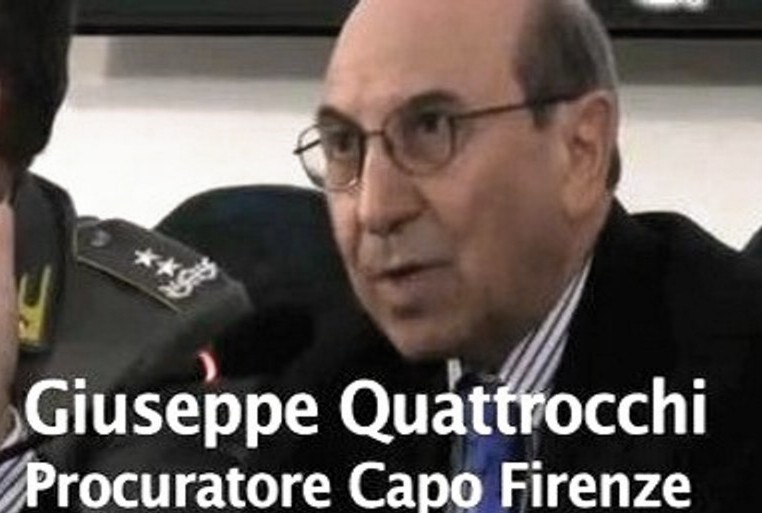
Wednesday, February 06, 2013
Should The Knox Defense Point The Finger At An Angry Daddy?
Posted by Our Main Posters
1. State Of Judicial Process
Given a level playing field (a big if) it seems for now that Amanda Knox and Raffaele Sollecito are almost certainly going down for the final count.
There is not the slightest sign that their defense lawyers know how to contend with the Supreme Court appeal filed by Umbria’s chief prosecutor Dr Galati. One may have already walked (Maori) and the fact that the others don’t respond publicly to the Galati filing speaks volumes to Italian lawyers.
If the first appeal (called in Italy the second level) is rerun in whole or in part, Sollecito and Knox could see Judge Massei’s “mitigating factors” annulled and find themselves each facing 30 years inside or even life.
The whole thrust of Sollecito’s ill-timed book (subtitle “how to shoot oneself in both feet”) is that he deserves to serve less time than Amanda Knox (who he “nobly saved”) and preferably to serve no time at all.
2. Sliding Scales Of Discussions
Many bright people follow the case. We have many lawyers and crime experts and even judges read here. Many took a long time to settle on a “guilt” point of view and approached it very professionally (reflected in many of the posts written by professionals here). This is contrary to the klutzy, amateurish FOA campaign and their inaccurate rants about “haters”.
There are various great sliding scales or continuums in considering all aspects of this case. A lot of what we talk about on PMF and TJMK is where, precisely, we should all come down on each of these various scales at the end of the day. Especially of course how the judges in Rome and Perugia should calibrate them.
Via Dr Galati’s appeal and especially Sollecito’s book, we now have a new one. If reconvicted, should Sollecito and Knox serve equal time? Or should one or other serve more? Let us approach this by considering first some of the most-discussed of the sliding scales.
1) Was Knox a good friend of Meredith or increasingly a pariah?
Many here incline strongly to pariah.
Knox has an obvious tin ear and sharp elbows, was doing little study in Perugia, was making life hell for all her flatmates, was bringing noisy threatening lowlife men home (the other three virtually never brought men home), was disturbing Meredith’s studies, was hitting on patrons in Patrick’s bar, and was definitely into drugs to the extent that she might already have become an addict.
2) Pre-meditated murder or a hazing or spontaneous spiral initiated by Guede?
At least some here incline to the view espoused by some psychologists that Knox and Sollecito were probably both at minimum fantasizing violence, Knox against Meredith, and Sollecito long-term generically.
Knox had become threatened by Meredith in several different ways: Meredith was prettier, was much funnier, had won the best available boy, was brighter, had a tougher study regime, was more directed and ambitious, and had left Knox in the dust on all fronts. Hints that Meredith was about to get Knox’s job at Patrick’s bar could have been the last straw.
To most here, Knox has always seemed the initiator and the leader in the rage against Meredith, and the other two were possibly drawn in by group dynamics.
Judge Micheli certainly believed this. Judge Massei might have done, and his pointing at Guede (espoused in spades by Hellmann and Zanetti) and Massei’s “mitigating factors” both seemed “humane” stretches to give them a few years off - stretches which Chief Prosecutor Galati in his appeal and the Supreme Court in their finding on Guede have already both rejected.
3) Isolated crime/unique family or does American society incline this way?
Statistics show that society here in the US is separated out between super-rich and the other 99% more than at any time in the past 80 years and although productivity has been going up amazingly, all fruits of growth have gone to those super-rich. Many of them have a mindset that basically tells them they made it on their own, and government roles in their success and that of their creative hard-working employees dont matter a damn.
The situation and the anger in the US has been worsening, and absence of true growth for most people also have European and Japanese societies in disarray
In the US one can see heightened levels of anger in the losers of the Superbowl, in the renewed buying of guns, in conspiracy theories on the Internet, in the success of the very thought-provoking Hunger Games books and movie (small people against rich and a captured, cruel over-militarized government), in politics (of course!), and in the vitriolic flames on the IMDB movie forums now against the front-runner movies and actors for the Oscars.
We may not see this at major play here in the crime against Meredith, though, except in the over-competition sense, and the sense that Knox grew up in slight poverty (see below) and was burning through her savings with all the cocaine use (Perugia cops think it was cocaine)
4) Mental ill health in the perps and/or families or original evil?
Sollecito’s dad has long admitted that Raffaele is not normal, and he has struggled to keep him off drugs and focussed hard on his studies. His dad also admitted to all Italy that Sollecito included defamatory lies in his book.
An open and shut case? Seems so. Raffaele now looks “uncomplicatedly” psychopathic and the myriad wrong and nasty claims in his chest-beating book really hammer this take on him home.
That book seems to be his equivalent of Knox’s abrasive, uncaring two days on the stand in 2009 which so damaged her with the Massei jury.
Knox’s mental health seems more complicated. She was widely known to be “quirky” as a kid and then she became pretty wild in Seattle after she moved to live near the university. That certainly wouldn’t have helped.
Most recently, Knox seems to be sliding away into a bubble world without any possibility of admitting she needs treatment, which seems to explain her being kept well out of sight for a year now and not working or studying.
Generally the PROSECUTION in Perugia has been the side to suggest she is not mentally fully well (after the psychological tests in Capanne Prison in 2008) and the DEFENSE and FAMILY has been the side that shrugs this off and hasn’t made it any part of her defence.
Knox seems to have given off plenty of signs in the days after Meredith died that she was alternating between glee and horror. So she seemingly did know what she was doing on the night, and our guess is that it was she who pushed the knife in. In these circumstances the original verdict and sentence seem appropriate.
However!
5) Knox made herself what she was or did her family contribute?
Curt Knox’s seeming blind rage at Edda during their marriage and for years after are an open secret among some in Seattle. He apparently had one of the worst records in the entire US in not paying child support to Edda for Amanda and Deanna, and had again and again to be taken to Superior Court by Edda to be forced to make his monthly payments.
Here are two public records showing two instances of him being taken to Superior Court by Edda.
And we are told that Curt Knox was counseled by one or more judges to get himself some anger management therapy. Apparently he wasn’t formally required to take anger management therapy. He may have done so, though there seems no record that he ever did.
Okay. Not all kids growing up in such toxic family situations suffer, but some do, and a few end up with their hard wiring seriously messed up. Some even end up as drug-takers and murderers.
The classic example recently was the mass killer Anders Breivek in Norway, whose early childhood in a toxic family situation was not entirely unlike Knox’s. (In that case also, the prosecution thought maybe he was nuts, and the defense, successfully, argued otherwise.)
Italian lawyers tell us that it would be for the DEFENSE to bring this up in Perugia if it is a possible mitigating factor, and that it doesnt impinge on the prosecution’s case.
But how could they?
Curt Knox was apparently the one who shushed Amanda Knox at their first meeting in Capanne Prison, Curt Knox was apparently the one who misled her about the world-wide skepticisim against her (she didnt know about that until she came out of prison), and Curt Knox was apparently the one who drove the nasty PR bus - and most recently hosted all of the worst of the rabid PR nuts (including Sforza and Fischer) in Seattle.
Curt Knox has apparently consistently instructed the defense lawyers and PR honchos to keep the pedal to the floor, even though Chris Mellas once openly argued against that. Amanda Knox may have pushed the knife in, but Curt Knox for five years has not come clean about his own possible role in any mental condition.
Our present conclusion
Without a lot more information on Amanda Knox’s early days in her broken home in Seattle, and her current mental condition and condition back in 2007, it is pretty hard to calibrate this. It is not really possible to be precise about where she should be on any sliding scale of time deserved in prison if she is finally convicted.
It is really incumbent upon the defense counsel in Italy (their lawyers’ code of ethics requires this) to push hard for this information, and if they think it relevant to present it to court at any rerun of the appeal trial.
Amanda Knox herself should want this.

